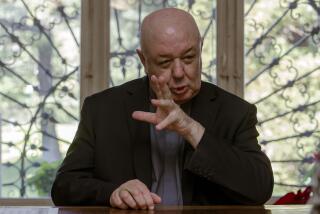Exposure : Nazi Hunters Await U.N. Files on Many Who Escaped Justice
- Share via
Deep in the archives of the United Nations are stacks of files that Nazi hunters believe will provide new and damning evidence against thousands of suspected Nazi war criminals.
About 8,000 files, which have collected dust for 40 years, are of particular interest to the Simon Wiesenthal Center, the Los Angeles organization that tracks former Nazis and monitors anti-Semitic acts worldwide.
“Let’s not forget that many Nazis escaped the bar of justice,” said Rabbi Marvin Hier, dean of the Wiesenthal Center, who has been among those pressing the U.N. War Crimes Commission to release the files.
The files were compiled by the commission in 1947, but were stored away and largely forgotten during the tempestuous Cold War years, Hier said. “It was not a conspiracy” by the commission, he said. “It was apathy.”
The existence of the files came to light in April, 1986, when it was revealed that Kurt Waldheim, former secretary general of the United Nations, was suspected of involvement in Nazi atrocities. Two months later Waldheim, who denies the accusations, was elected president of Austria.
The Wiesenthal Center has been trying to get the files released since then.
Agree to Release Files
The 17 nations that form the commission agreed Nov. 6 to release the files to researchers, but it has not been indicated when the archives will be opened, Hier said.
“We’re kind of anxious to speed up the bureaucracy,” he said. “It will be a treasure of information for us.”
Francois Giuliani, spokesman for the U.N. secretary general, said that officials are preparing application forms and that researchers may be allowed access to the files by the end of the year.
While the files could prove a gold mine for researchers and historians, the Wiesenthal Center’s main interest lies in bringing ex-Nazis to justice almost half a century after the horror of Adolf Hitler’s “final solution.”
The files are expected to contain information on some, if not all, of the 39,000 Nazis suspected of varying degrees of involvement in the killing of Jews and other civilians, Hier said.
Details on mass murders, dates, locations, names of victims and possibly names of Nazi collaborators not previously identified should all turn up in the files, judging from the breadth and scope of the commission’s investigations and interviews in 1947, Hier said.
The list of 39,000 names was released during the Waldheim scandal, but it is the thousands of files that could give Nazi hunters the ammunition they need to bring ex-Nazis to justice.
‘Many Still Alive’
“Many of them could still be alive,” although they would be in their 70s and 80s, Hier said.
Argentine authorities, for example, recently arrested Josef Schwammberger, No. 5 on a list of the 10 most-wanted former Nazis compiled by the Wiesenthal Center.
Schwammberger, 75, who Nazi hunters say oversaw three Polish death camps in which thousands of Jews were killed from 1942 to 1944, has been living in Argentina since 1950, Hier said.
The former Nazi was arrested in Austria in 1947, but he escaped with the help of Odessa, the post-World War II underground Nazi organization.
From 1980 until earlier this year he lived in a town near Buenos Aires, Hier said. But he moved shortly after Oct. 13, the day the Wiesenthal Center released its top-10 list of ex-Nazis believed to be alive.
Dossiers and photographs of the 10 were circulated worldwide and the publicity apparently prompted Schwammberger to move to a secluded Argentinian ranch, Hier said.
His move attracted attention and authorities took him into custody. He was positively identified and is awaiting a judge’s decision on West Germany’s extradition request.
The U.N. files should provide crucial evidence against Schwammberger at his trial, Hier said.
Other Damning Information
The files also are expected to contain information on Heinrich Mueller, head of Hitler’s secret police, the Gestapo; Dr. Erich Gruen, chief physician at the Maidanek concentration camp in Poland, where more than 1 million people died in gas chambers; Hans Wilhelm Koenig, an associate of Dr. Josef Mengele, the infamous “angel of death” at the Auschwitz concentration camp, and Alois Brunner, the notorious associate of Adolf Eichmann, one of Hitler’s top lieutenants who was tried for his war crimes and hanged in 1961.
Except for Brunner, the fate and whereabouts of the other three are shrouded in mystery.
Brunner, who is in his 70s, is known to be living under the name of Dr. Georg Fischer in Damascus with the blessing of the Syrian government. It is believed that if the U.N. files contain enough evidence of Brunner’s participation in the deaths of 128,000 people, public opinion would force Syria to extradite him for war crime trials, Hier said.
Because of the advanced age of former Nazis, it is imperative that researchers gain access to the files as soon as possible, said Rabbi Abraham Cooper, the Wiesenthal Center’s associate dean.
“We have a few more years left in the hunt for Nazi criminals,” he said.
More to Read
Sign up for Essential California
The most important California stories and recommendations in your inbox every morning.
You may occasionally receive promotional content from the Los Angeles Times.










